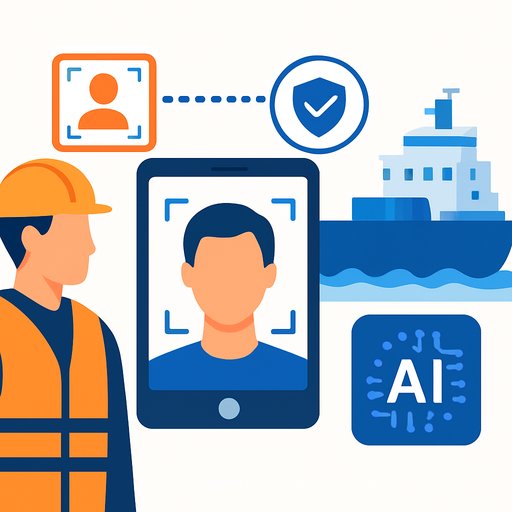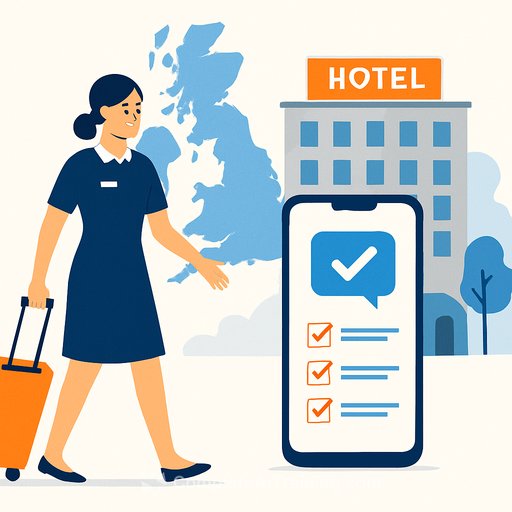SmartSea brings aviation-grade biometrics and AI to maritime operations
SmartSea has launched two connected platforms, backed by SITA, aimed at improving how crews move and how safety gets managed across fleets. FacePod handles biometric-enabled crew movement from home to vessel, while a new AI-assisted HSE system focuses on real-time risk detection and compliance.
For operations teams, the pitch is simple: fewer delays, better visibility, and safer worksites - offshore and onshore.
What FacePod does
FacePod applies biometric and AI verification at every stage of crew travel. From airport to port to gangway, operators can verify identity, track status, and resolve exceptions with less manual coordination.
This reduces administrative load, cuts bottlenecks at handover points, and gives schedulers a single view of who's cleared to move, who's delayed, and why. It takes the consistency aviation has refined and puts it to work at sea.
FacePod is inspired by SITA's SmartPath technology, now widely used in airports. For background on how it works in passenger environments, see SITA Smart Path.
How the AI HSE platform works
The HSE system uses digital observations, automated image analysis, and risk assessments to spot hazards earlier. It supports proactive mitigation, standardizes reporting, and centralizes compliance data.
For operations leads, that means faster detection-to-action cycles, cleaner audit trails, and a consistent way to measure safety performance across vessels and sites.
Part of a bigger stack: SmartSea Vision
Both solutions sit under SmartSea Vision - a strategy to connect people, data, operations, and safety. The goal is to replace fragmented tools and spreadsheets with unified workflows that scale across fleets.
Industry context
SITA previously launched SmartSea through an initial agreement with Columbia Shipmanagement (CSM), applying proven aviation practices to maritime challenges such as capacity constraints, security, and cost pressure. In parallel, travel tech from other sectors is making similar moves; for example, Amadeus-supported embarkation for MSC Cruises has reported a 50 percent reduction in boarding time.
What this means for operations
- Shorter end-to-end crew movement times and fewer missed sailings due to verification delays.
- Real-time status for each crew member across airports, ports, and vessels - no more stitching together emails and spreadsheets.
- Standardized HSE observations, faster near-miss capture, and earlier interventions.
- Audit-ready compliance reporting with less manual chase-down.
- Consistent SOPs across ships and yards, with the flexibility to handle local rules.
Implementation notes
- Identity and consent: Define enrollment, re-verification, and offboarding. Align with flag-state and local privacy rules.
- Data controls: Set retention policies for biometrics and images. Limit access by role. Log everything.
- Connectivity: Plan for offline operation at sea and sync on return. Use guardrails for partial uploads.
- Integrations: Connect to crewing, travel, access control, and incident management systems.
- Change management: Train port agents, schedulers, and supervisors. Simulate exception paths before go-live.
Metrics to track from day one
- Average crew transfer time (home-to-vessel) and variance by route.
- Verification failure rate and top exception causes.
- Observation-to-action lead time and incident rate per exposure hour.
- Compliance report cycle time and audit findings closed on first pass.
Practical first steps
- Pilot FacePod on one high-volume crew route; benchmark time saved at each checkpoint.
- Run the HSE platform on a single vessel or yard; compare hazard detection and reporting quality against baseline.
- Create a cross-functional playbook for exceptions: mismatched IDs, expired documents, offline periods, and escalations.
Bottom line: SmartSea's FacePod and AI-assisted HSE give operations leaders tighter control over crew movement and safer worksites with less administrative overhead. If you're evaluating where to start, pick one high-friction lane, define clear success metrics, and scale from there.
Level up your team's AI fluency: if you're building internal capability to deploy and manage AI-driven ops tools, see curated programs by role at Complete AI Training.
Your membership also unlocks:






